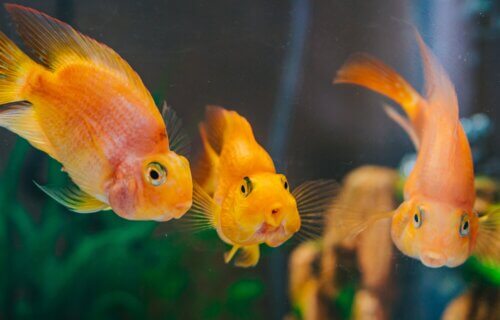OXFORD, United Kingdom — Although goldfish have a reputation of being “dumb,” with only a “three-second memory,” researchers from the University of Oxford say these commons pets might be sharper than many think. Their study finds goldfish can actually estimate distances with great precision.
Neural circuits responsible for spatial navigations in mammals, birds, and reptiles are well-understood, but it’s remained unclear whether similar structures also existed in fish. Exploring this would allow scientists to have a greater understanding of the evolution of spatial navigation systems.
To find out, Dr. Adelaide Sibeaux and a team of researchers trained nine goldfish to travel a distance of 70 centimeters within a tank covered in repeating stripe patterns every two centimeters. Upon reaching the distance, the fish received a cue to turn around and swim back to where they came from. The researchers also conducted an experiment that allowed them to examine if fish would swim back without that cue, from a different starting point, and in an altered pattern.
All but one of the goldfish successfully estimated the distance without a cue, swimming an average distance of 74 cm. When the start position was changed by 20 or 40 cm, the fish still continued to swim as if the distance was still 70 cm. When the background pattern was modified to display the stripe pattern every one centimeter, the goldfish overestimated their traveling distance by 36 percent, leading them to turn around too early — around the 47.5 cm mark.
Additionally, the researchers found that changing the background from vertical to horizontal, the fish struggled more to estimate distance and traveled 5 cm less than the set distance. However, changing the pattern to a checkered pattern resulted in no differences in swimming distance, which suggests that changing the frequency of spatial information affected their estimates and not just patterns.
Overall, the researchers agree that their results indicate that goldfish measure distance by visually recording apparent object motion patterns within the environment, which is called “optic flow.” Plenty of land animals, such as humans, ants, wolf-spiders, and bees using optic flow, but goldfish still process things slightly differently. Comparably, terrestrial animals estimate distances by measuring how the angle between their eye and objects around them change as they travel. Goldfish tend to only focus on the number of noticed changes and not how they work together.
“We present robust evidence that goldfish can accurately estimate distance and show that they use optic flow to do so. These results provide a compelling basis to use goldfish as a model system to investigate the evolution of the mechanisms that underpin spatial cognition in vertebrates,” concludes Dr. Sibeaux in a university release.
The findings are published in the journal Proceedings of the Royal Society B Biological Sciences.

